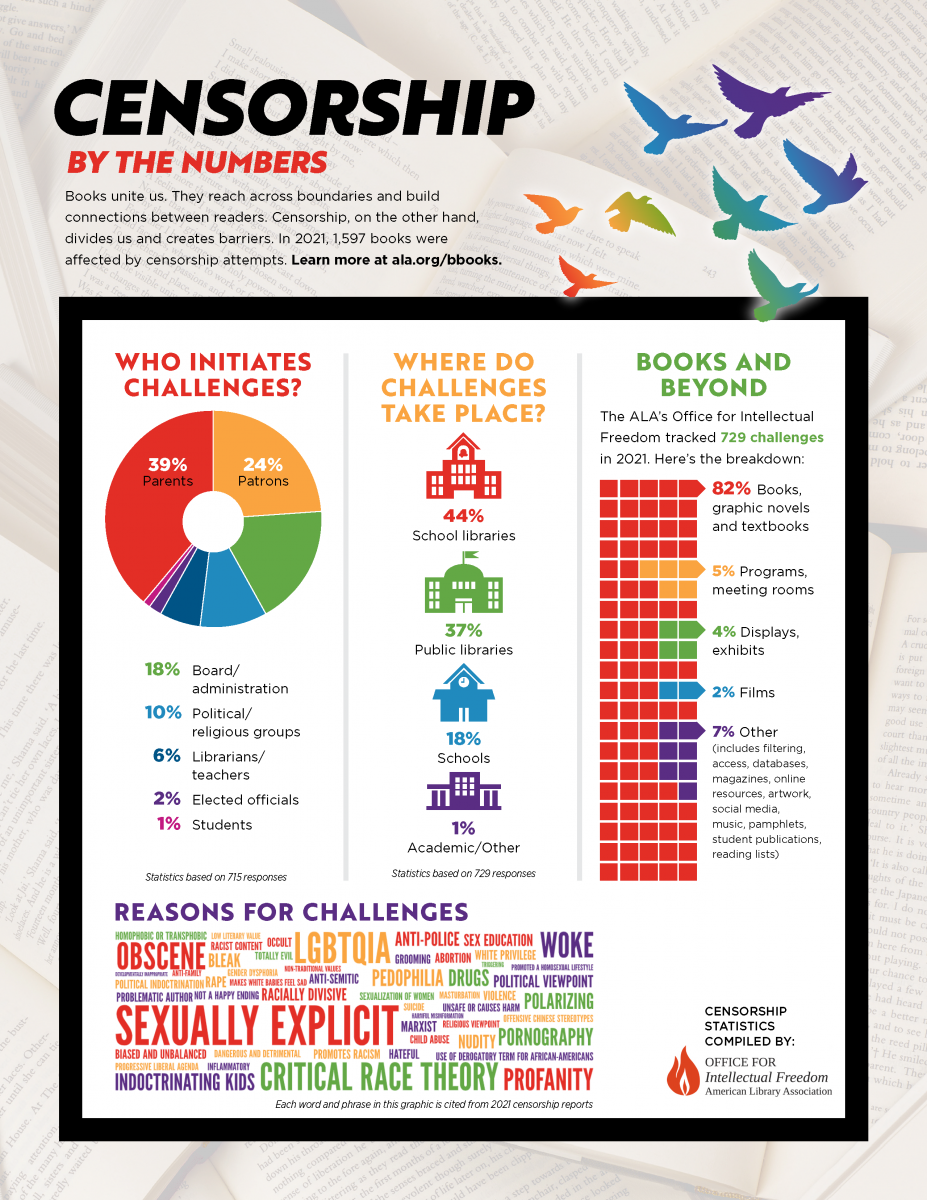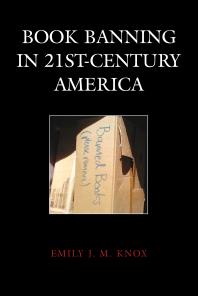In recent years, book bans and challenges have become a major area of public discourse. Banned books were once a more niche topic, mostly discussed amongst librarians, educators, writers, and publishers. However, a surge of challenges and bans across the United States, focused largely on books by and about marginalized people, has pushed the issue into public attention.


On Thursday September 29th (the day after this blog post is published), CSUN will host its 10th Annual Banned Books Readout: Belonging on the Shelf featuring writer and teacher Karimah Tennyson-Marsh and co-sponsored by the University Library, the Department of Journalism, the Queer Studies Program and the Pride Center. Understanding the nuances of book challenges and censorship, this event will showcase the importance of resisting book bans through dramatic readings.
Hearing the phrase “banned book” might feel old-fashioned in many ways. Often people invoke Fahrenheit 451 and the image of book burnings, or refer to now widely-taught texts like Catcher in the Rye or Catch-22. These books still face challenges and bans across the country, of course. However, it’s worth pointing out that in 2021, the most challenged/banned book was Gender Queer by Maia Kobabe, and that The Bluest Eye by Toni Morrison has shown up as a frequently-challenged book since its publication.
Often, bans are presented within a framework of protecting student and children interests; what they do instead, is erase the ways students can encounter themselves or other human experiences. In some cases, the students themselves are the ones pushing back against bans.
In the growing area of study around who challenges books and why, the work of Emily Knox has emerged as a foundational text for research and understanding. You can access a digital copy of Book Banning in 21st-Century America through the CSUN library, or hear her discuss her research with a panel of library workers on the podcast librarypunk.

Book Banning in 21st-Century America by Emily J. M. Knox
Requests for the removal, relocation, and restriction of books—also known as challenges—occur with some frequency in the United States. Book Banning in 21st-Century American Libraries, based on thirteen contemporary book challenge cases in schools and public libraries across the United States argues that understanding contemporary reading practices, especially interpretive strategies, is vital to understanding why people attempt to censor books in schools and public libraries. Previous research on censorship tends to focus on legal frameworks centered on Supreme Court cases, historical case studies, and bibliographies of texts that are targeted for removal or relocation and is often concerned with how censorship occurs. The current project, on the other hand, is focused on the why of censorship and posits that many censorship behaviors and practices, such as challenging books, are intimately tied to the how one understands the practice of reading and its effects on character development and behavior.
As reading icon LeVar Burton used to say, “Don’t take my word for it.” Check out some banned books for yourself! You can access digital copies of the Top 10 most challenged books in 2021, as well as other historically and frequently banned books, through the Los Angeles Public Library, or explore the research and discourse around challenged books in the University Library catalog.
Happy reading! 🔥
References:
Alfonseca, Kiara. “Students Protest Book Bans by Distributing ‘Maus,’ ‘Beloved.’” ABC News, https://abcnews.go.com/US/students-protest-book-bans-distributing-maus-beloved/story?id=82622456. Accessed 28 Sept. 2022.



